You approach the church via the Tudor Gatehouse. It dates from 1595 and was fortuitously revealed when a bomb dropped by a Zeppelin in 1915 tore off later accretions as these ‘before’ and ‘after’ images illustrate …
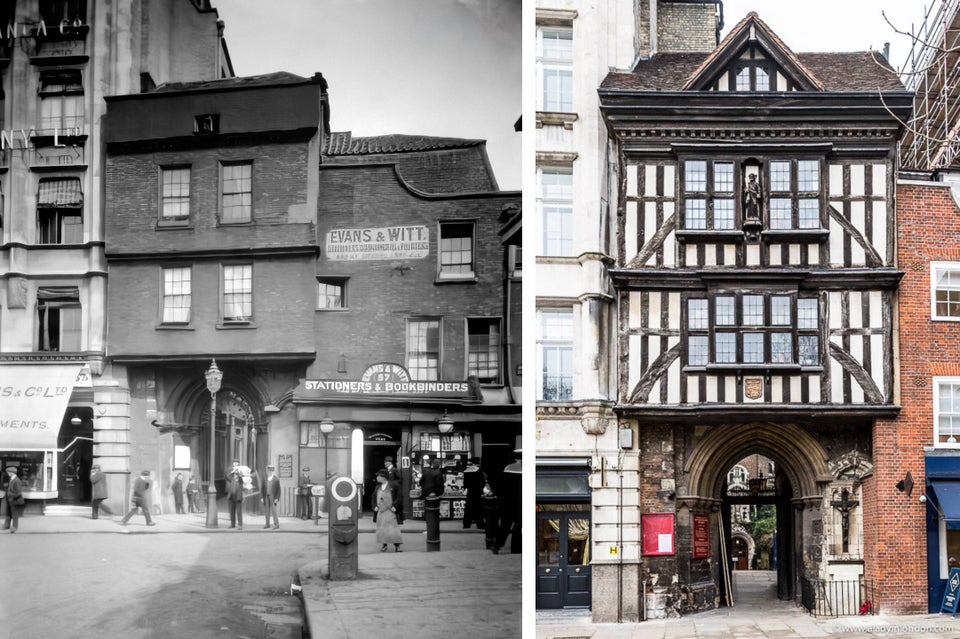
Much of the late 19th and early 20th century church restoration work was carried out by Sir Aston Webb (1849-1930). His son, Philip, was killed in action on 25th September 1916 and his name appears on the memorial to the right of the entrance …
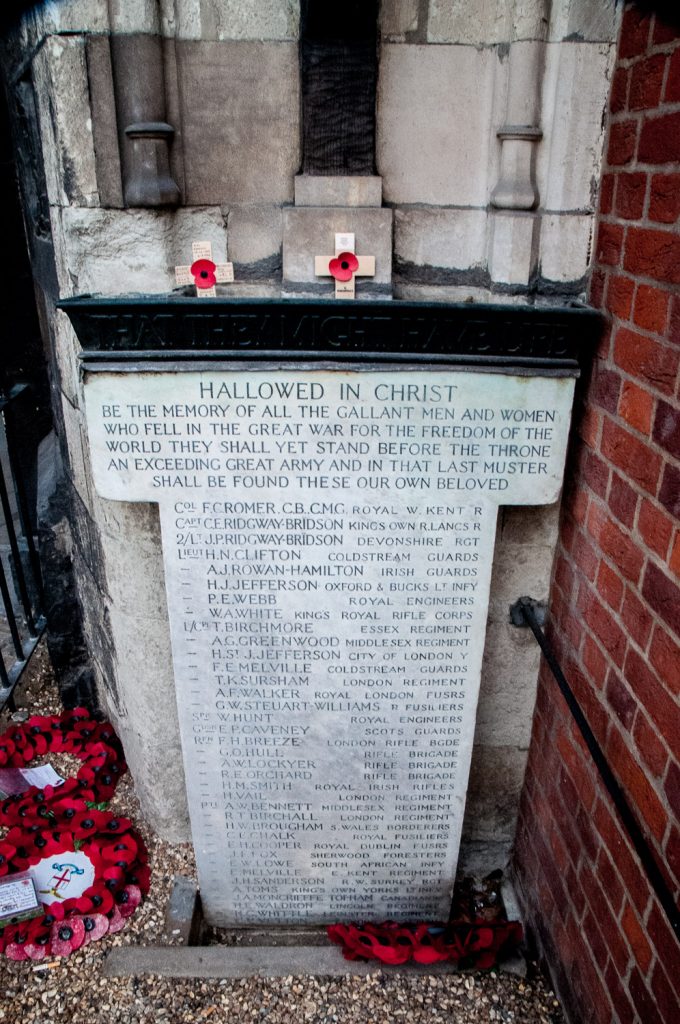
There is a plaque just behind the gate commemorating Sir Aston Webb’s work. It includes his coat of arms (which incorporates a spider, a playful reference to his name) …
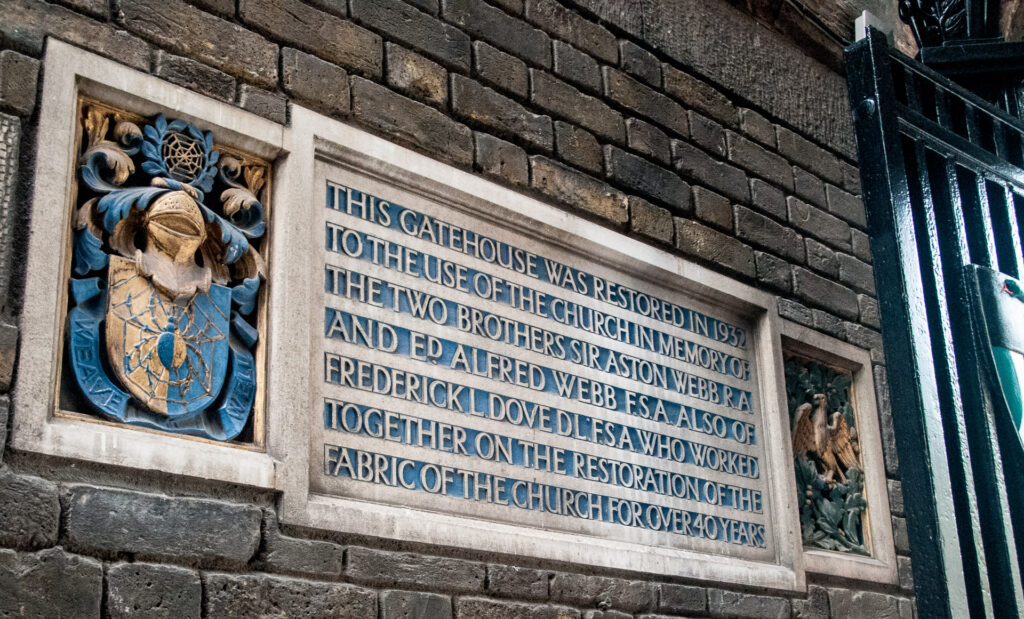
You get a nice view of the flint and Portland Stone western facade of the church from the raised churchyard. An old barrel tomb rests in the foreground …
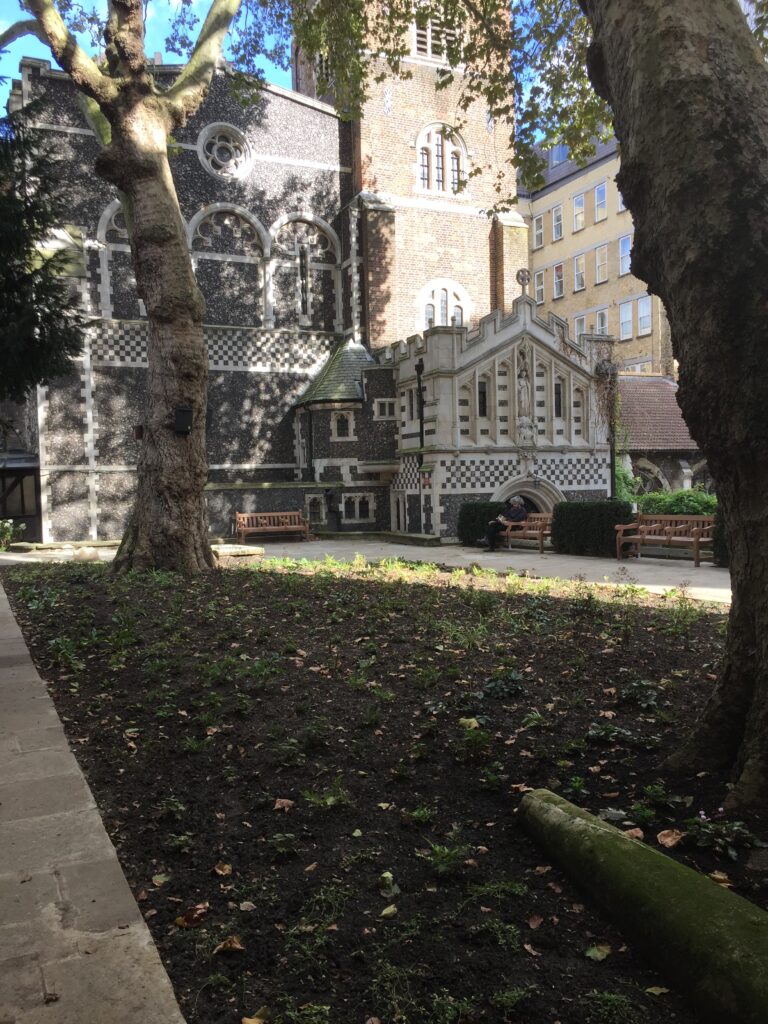
Bear in mind that the original church was vast and also covered the area now occupied by the graveyard and the path. This used to be the nave, as illustrated in this plan on display in the church …
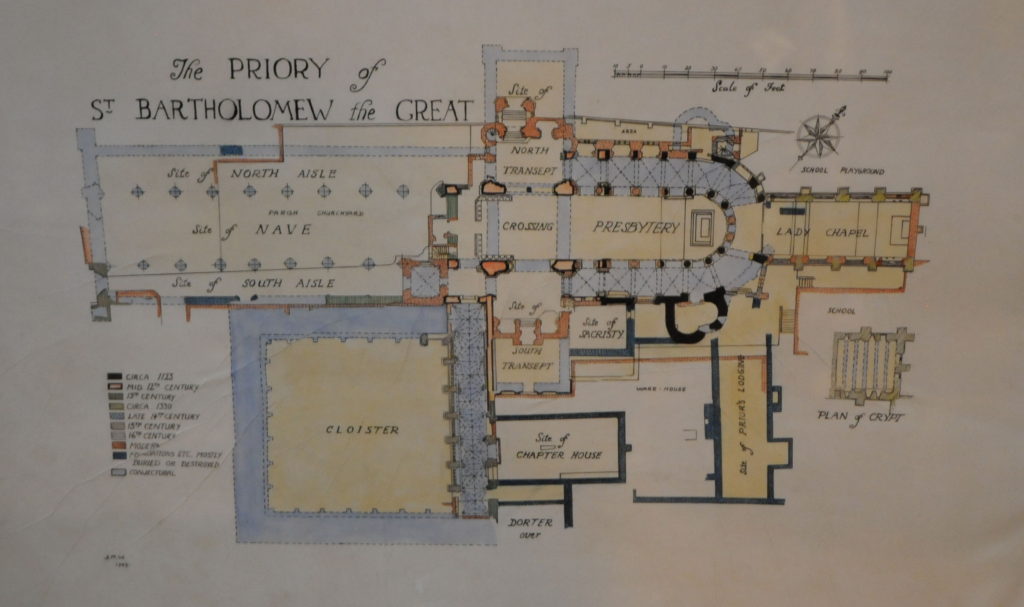
Stepping into the church seems to transport you to another time and place …
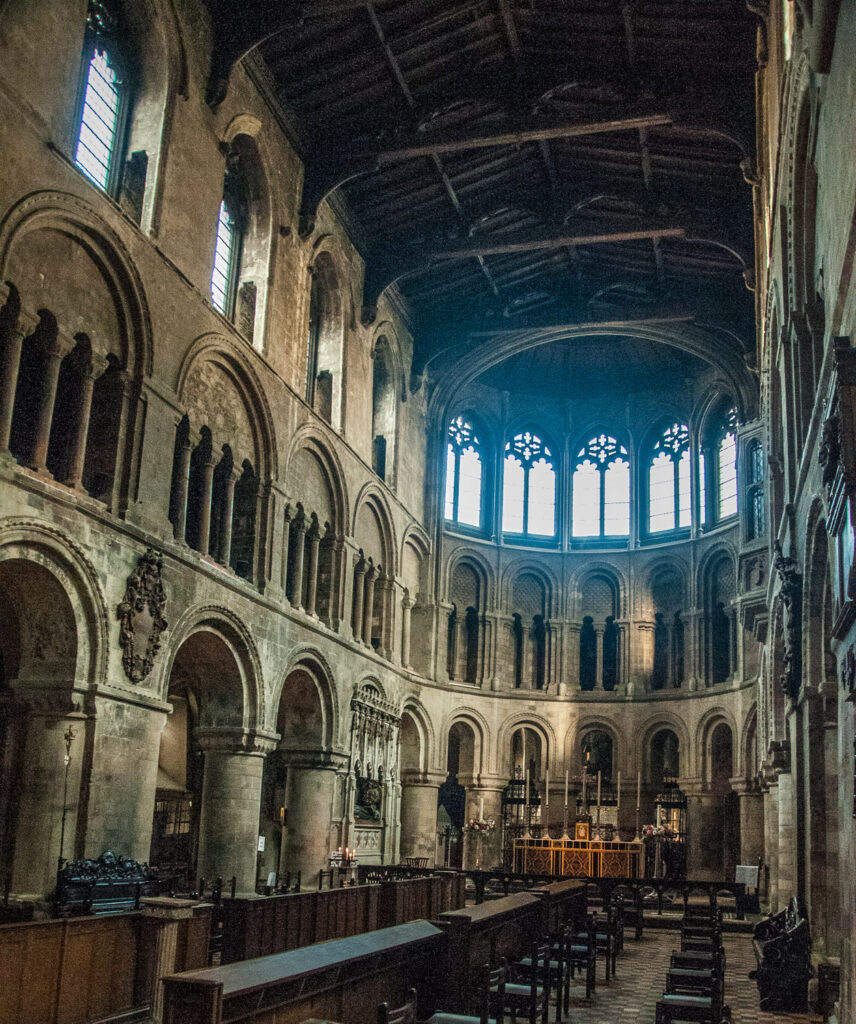
The patchworked exterior gives no hint of the stunning Romanesque interior, with its characteristic round arches and sturdy pillars. It’s a rare sight in London; indeed, this is reckoned to be the best preserved and finest Romanesque church interior in the City.
Just to shock you back into the present, the south transept contains this sculpture …
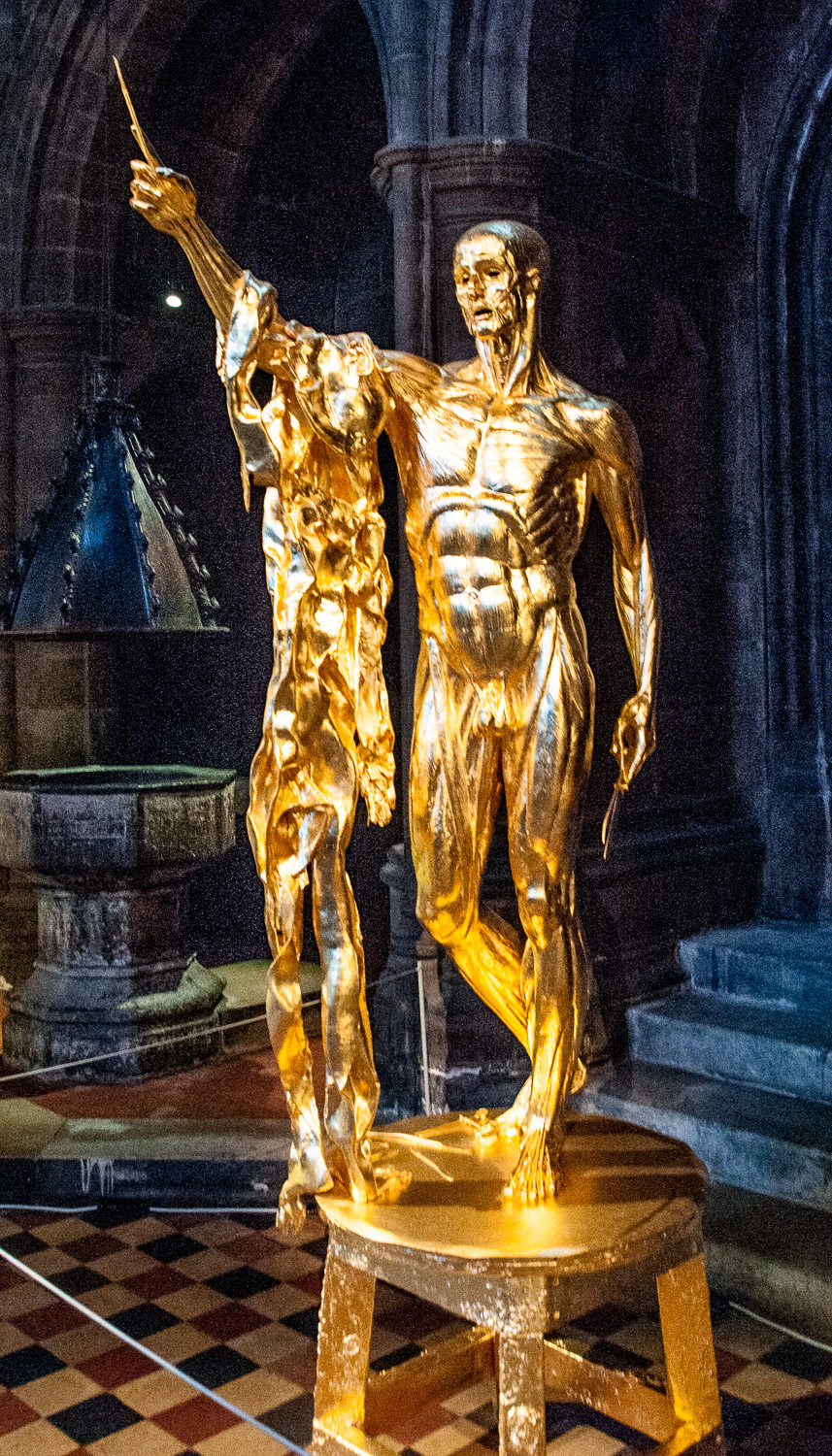
Entitled Exquisite Pain, as well as his skin St Bartholomew also holds a scalpel in one hand and a pair of scissors in the other. The second surprise, to me anyway, was that this work was by Damien Hirst, the modern artist known particularly for his spot paintings and the shark swimming in formaldehyde. St Bartholomew is the patron saint of Doctors and Surgeons and Hirst has said that this 2006 work ‘acts as a reminder that the strict demarcation between art, religion and science is a relatively recent development and that depictions of Saint Bartholomew were often used by medics to aid in anatomy studies’. He went on to say that the scissors were inspired by Tim Burton’s film ‘Edward Scissorhands’ (1990) to imply that ‘his exposure and pain is seemingly self- inflicted. It’s kind of beautiful yet tragic’. The work is on long-term loan from the artist …
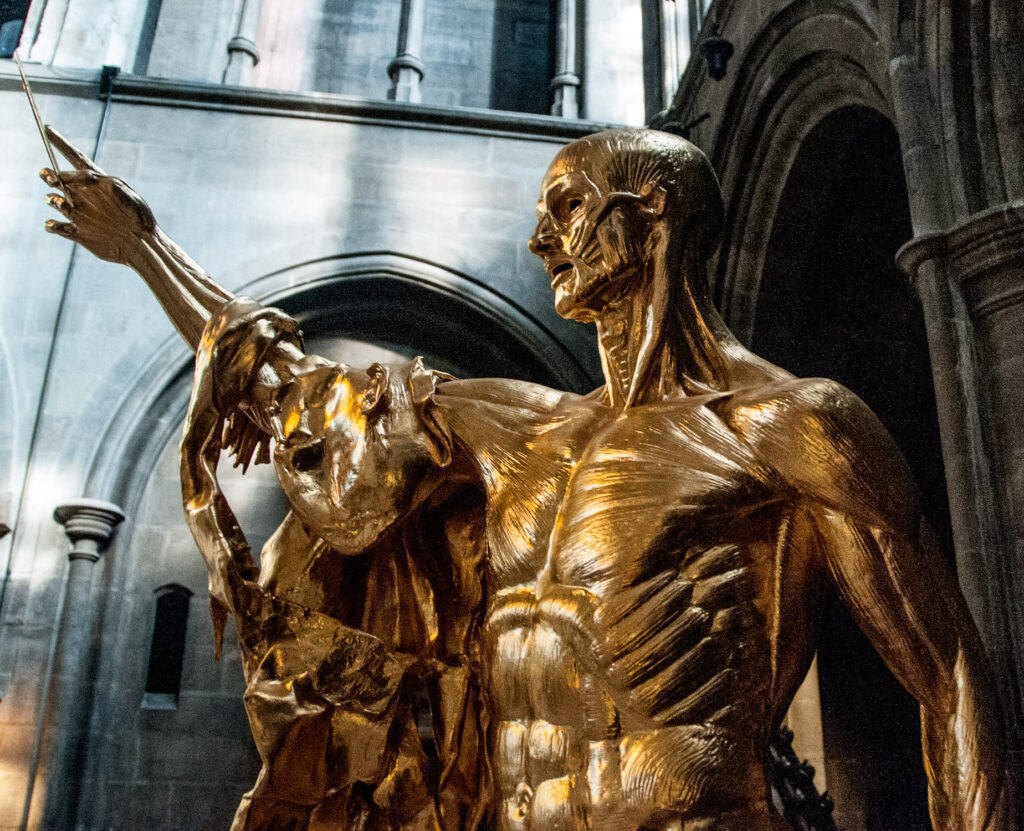
Just behind Hirst’s work is a rare pre-Reformation font (1404) in which William Hogarth was baptised on 28 November 1697 …
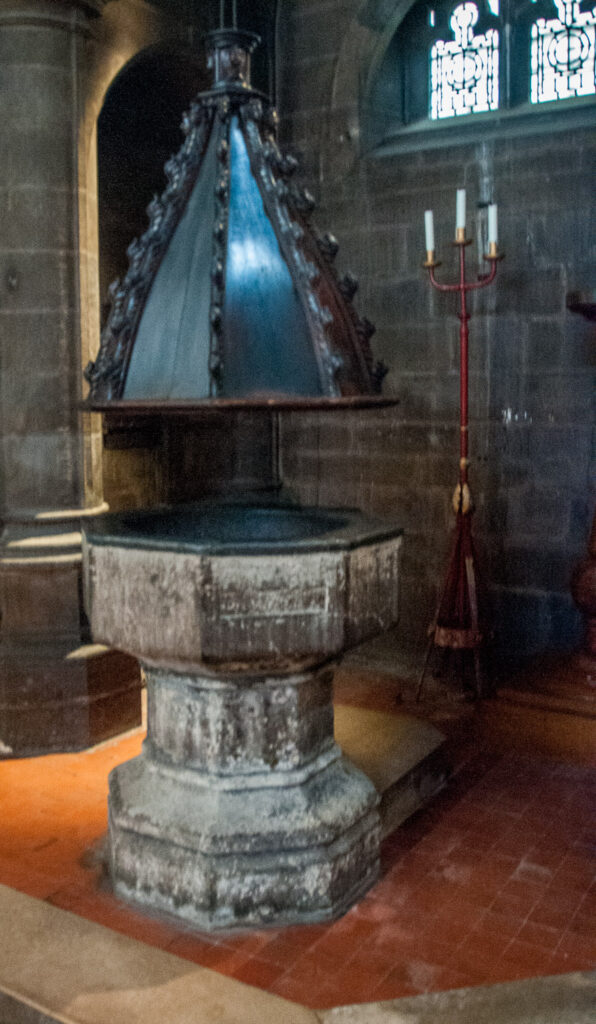
I paused at the monument to Edward Cooke who died in 1652 and read the curious rhyme inscribed on it …
Vnsluce yor briny floods, what can yee keepe
Yor eyes from teares, & see the marble weepe
Burst out for shame: or if yee find noe vent
For teares, yet stay, and see the stones relent.
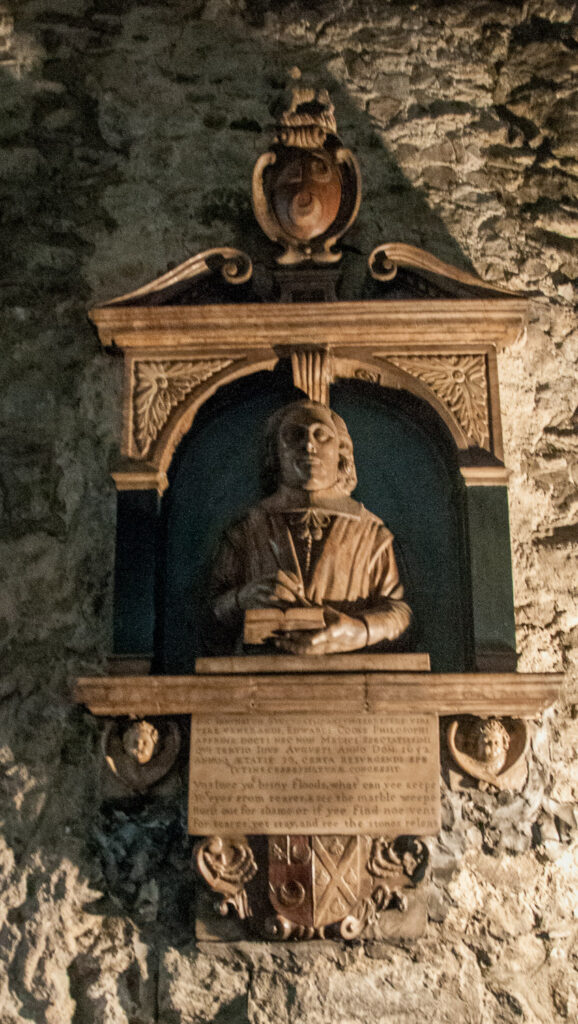
It was known as the ‘weeping statue’ because the moisture in the atmosphere used to be soaked up by the soft marble and miraculously released again as ‘tears’ from time to time. Alas, the Victorians installed a radiator under the monument which put a stop to the moisture releasing properties of the stone and, sadly, it wept no more.
This is the spectacular tomb of Sir Walter and Lady Mary Mildmay. He was the Chancellor of the Exchequer to Queen Elizabeth I and the founder of Emmanuel College, Cambridge. His wife was the sister of the Queen’s ‘spymaster’, Sir Francis Walsingham. Sir Walter died in 1589 and Mary in 1576 …
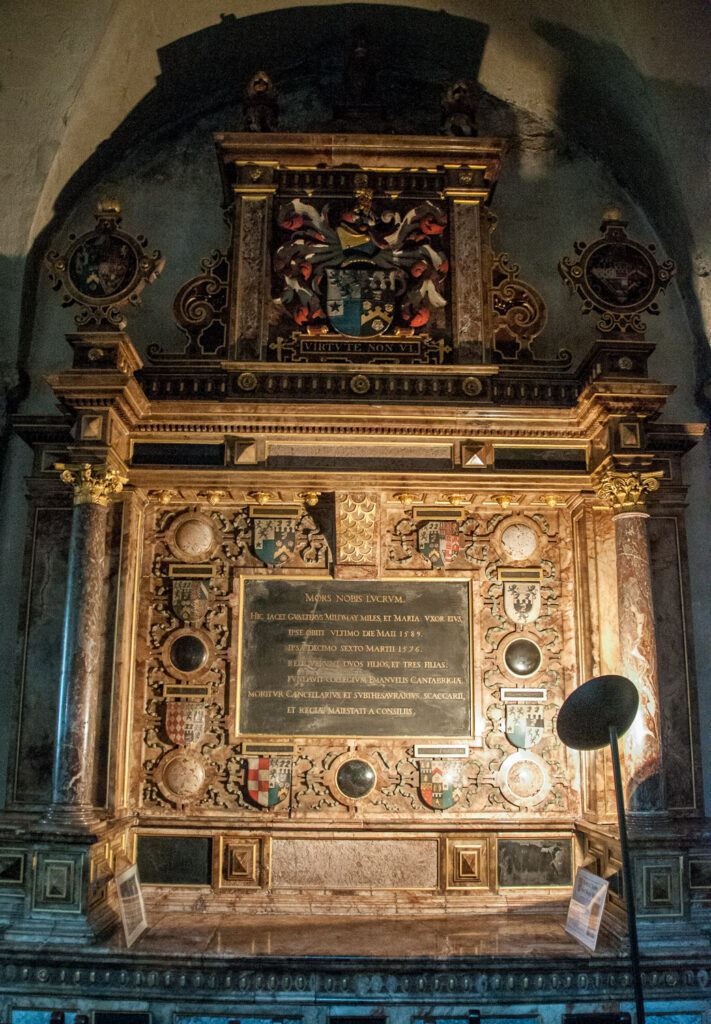
It’s thought that the tomb does not contain religious figures or Christian symbols because Sir Walter had strong Puritan leanings.
This is the monument to James Rivers who died of the plague in 1641 …
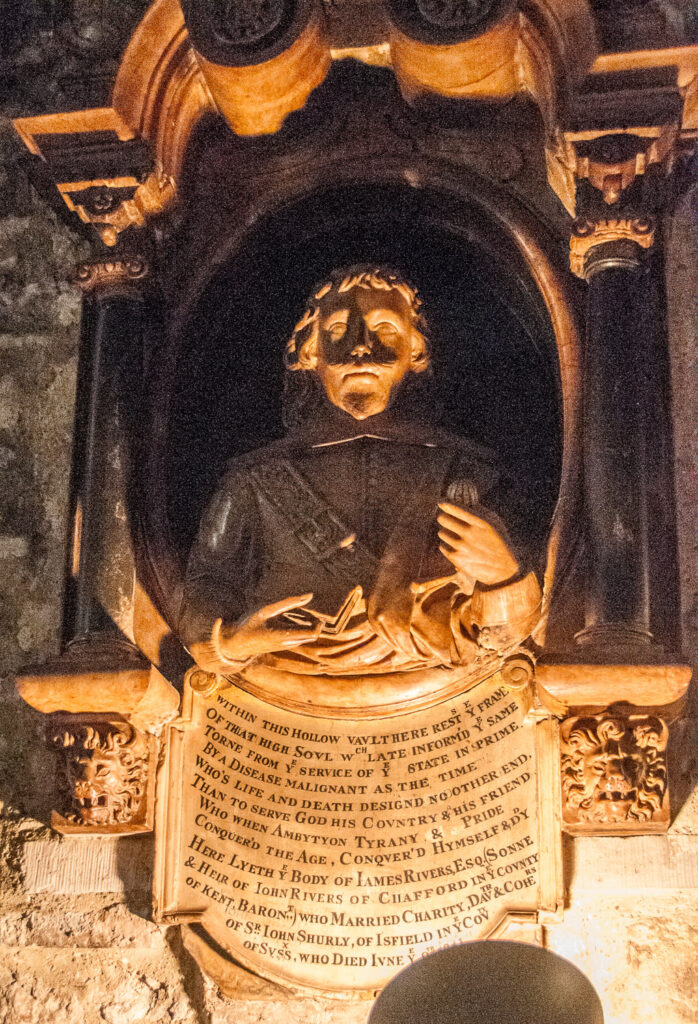
The inscription refers to a disease as malignant as the time referring, no doubt, to the English Civil War. Rivers was a prominent Puritan MP and took his seat in Parliament in 1640.
In a number of places around the church you will find these beautiful sculptures in glass by Sophie Arkette …

They are entitled Colloquy and are etched with literary or poetical text. These are illuminated and distorted by the effects of light (from either candles within the work or from around the building) and water (included within parts of the work).
Under the oriel window there is a nice example of a rebus, in this case a representation of a person’s name using a picture. Here Prior Bolton’s name is neatly implied by a crossbow bolt piercing a tun (a type of cask). Bolton was Prior of St Bartholomew the Great between 1505 and 1532 and carried out repair and construction work across the church …
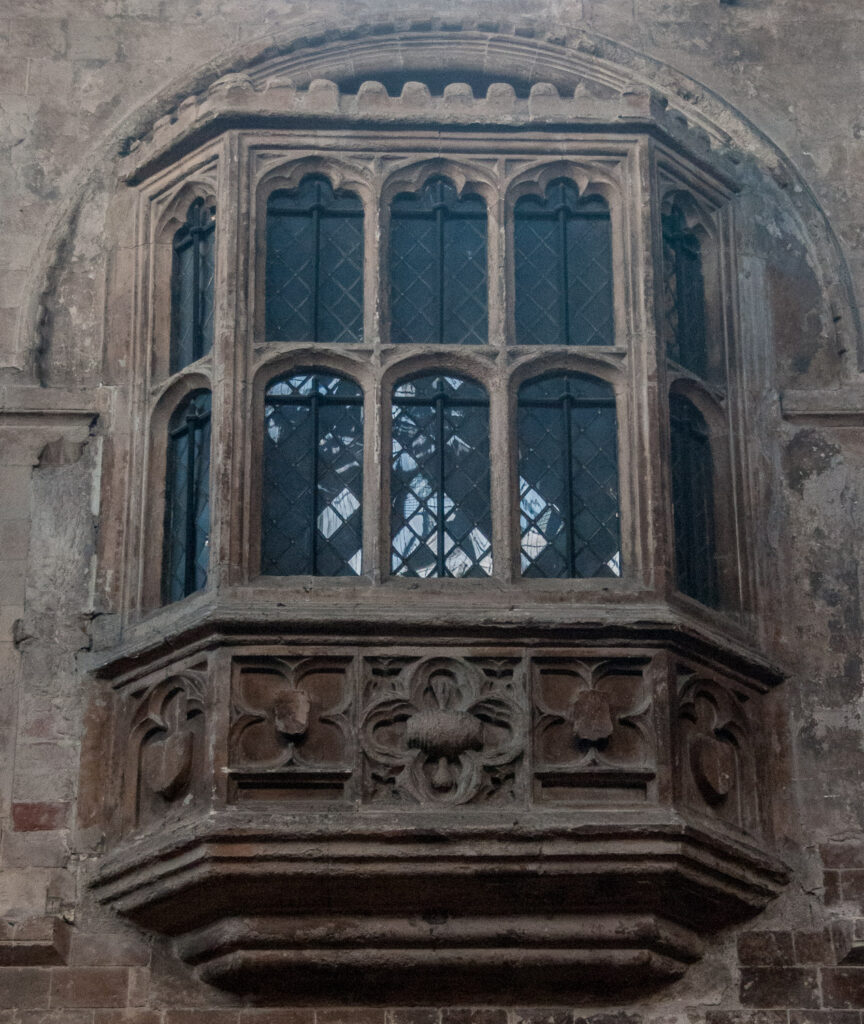
There is also a version in 16th century stained glass at the eastern end of the church …
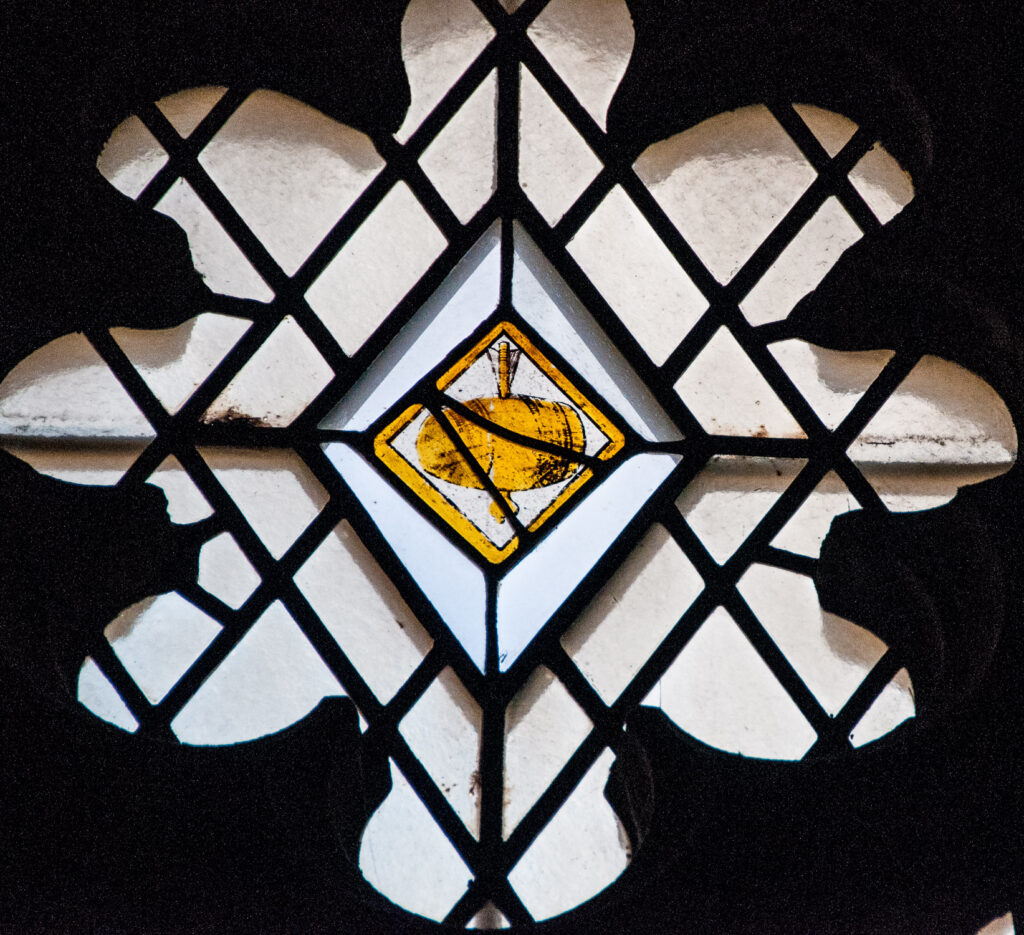
I was intrigued by this tombstone in the north transept …
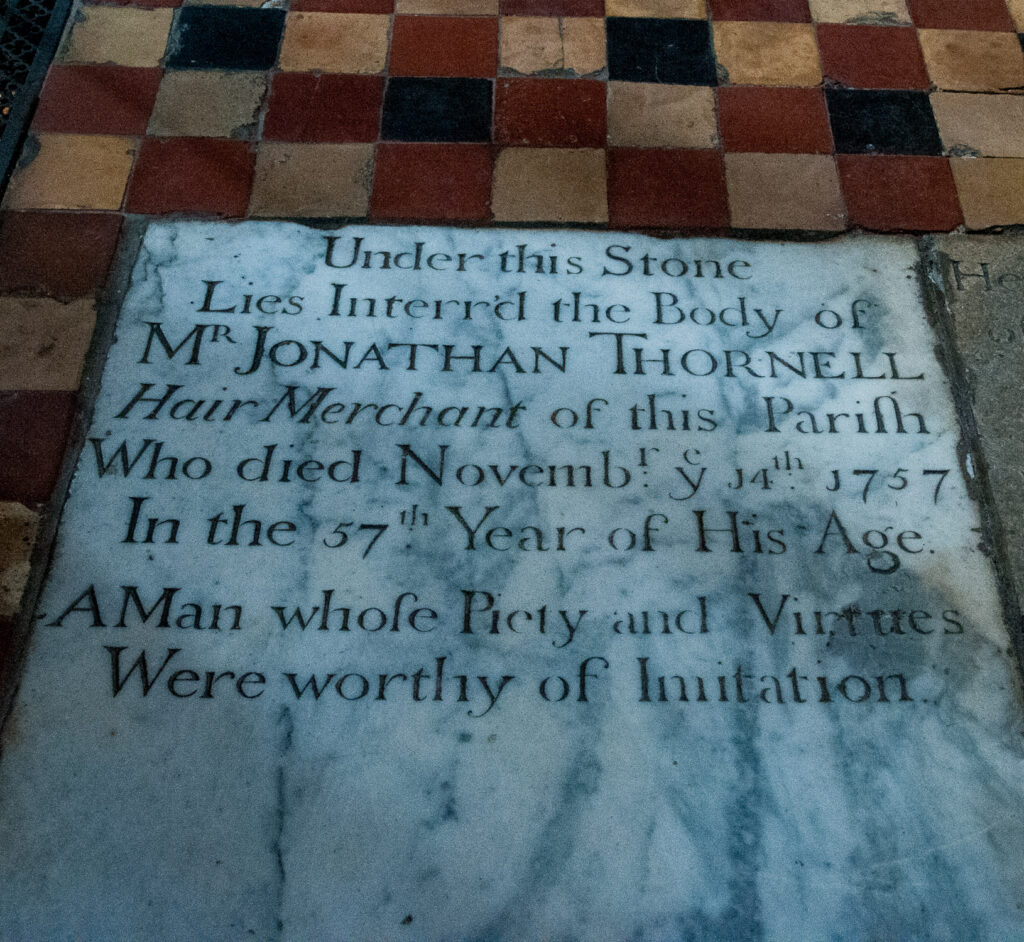
To be buried inside the church indicated that he was a wealthy man and this was no doubt because, in the 18th century, wigs of all varieties were tremendously fashionable. Good hair was seen as a sign of health, youth and beauty and merchants like Mr Thornell often travelled the country looking for supplies (even buying it off the head of those needy enough to sell it).
As I walked down the transept I glanced to my left and glimpsed this reclining figure …

It is of course, the tomb of Prior Rahere, the founder of the Priory and hospital …
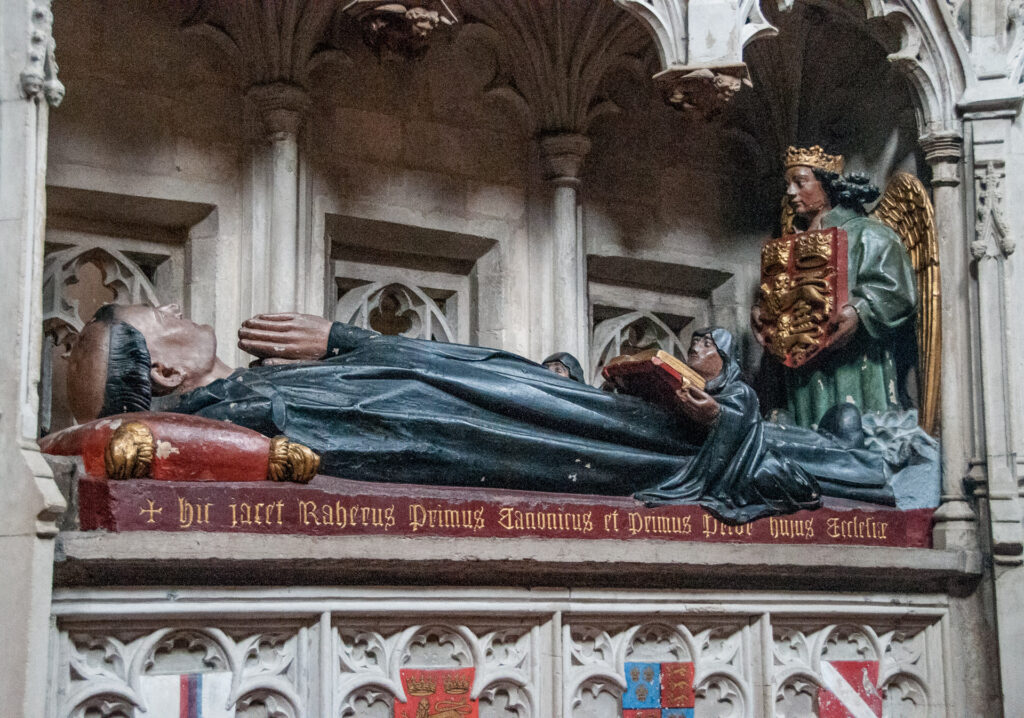
Rahere was a courtier and favourite at the court of Henry I who reigned from 1100 to 1135. After falling dangerously ill whilst on pilgrimage to Rome, Rahere had a vision of St Bartholomew, who told him to found a hospital. He duly got better, and when he returned to London he founded a hospital and an Augustinian priory in 1123 (dedicating them to St Bartholomew to give thanks for his recovery). He was the institution’s first prior and remained in this role until his death in 1144 (the tomb is later and dates from 1405). You can still see some of the original paintwork …
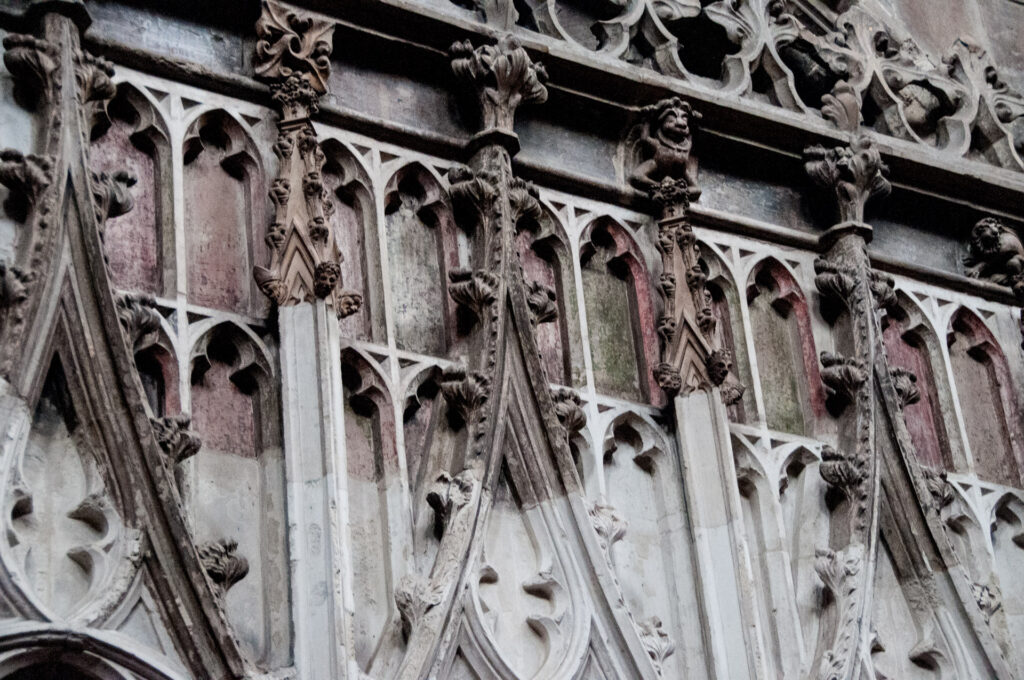
Incidentally, I came across this great 1915 picture of how the tomb was protected during wartime bombing …
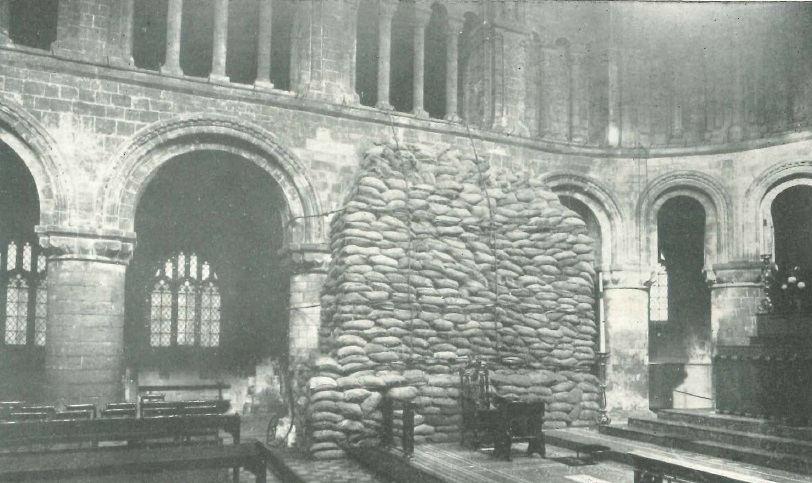
There is much more to see in this beautiful place and so I strongly recommend a visit. Entrance is free but the church has been hit hard by the pandemic so, if you can afford it, do make a donation to help support it. Opening times are on the website which you can access here.
If you would like to follow me on Instagram here is the link …
